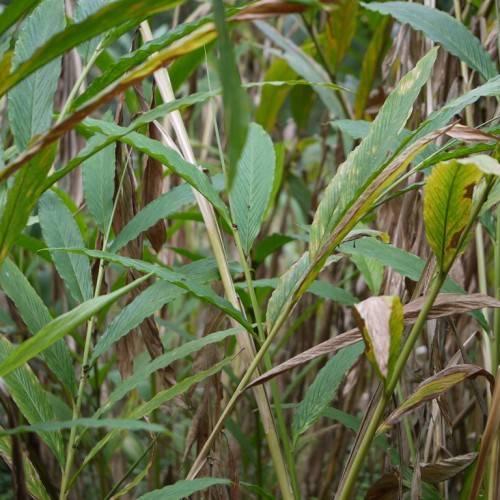
cardamom
Elettaria cardamomum
Cycle:
Herbaceous Perennial
Watering:
Frequent
Hardiness Zone:
10 - 12
Flowers:
Flowers
Sun:
Part shade
Fruits:
Fruits Ready In Summer
Edible:
Yes
Leaf:
Yes
Growth Rate:
High
Maintenance:
High
Salt Tolerant:
Yes
Care Level:
Medium
watering
Cardamom (Elettaria cardamomum) is a plant that loves moisture and steady watering. It requires frequent watering (about every 3 days), especially during its peak growing season in early spring, summer and fall. During the winter, the plant requires less water, usually every 2 weeks. When watering your cardamom plant, it is important to make sure that the soil is always slightly moist. The soil should never be allowed to dry out completely. Also, make sure to water directly into the root zone: use a thin, gentle stream of water from a watering can or a hose with a spray nozzle. Do not over-water as this can lead to root rot or other plant issues.
sunlight
Cardamom (Elettaria cardamomum) requires plenty of sunlight in order to grow and thrive. At least 6 to 8 hours of direct sunlight every day is recommended for optimal growth. It should also be exposed to plenty of diffused and indirect light the rest of the day. When the plant is grown outdoors, it will benefit from light for most of the day but should be shaded from any harsh afternoon sun. If grown indoors, a combination of natural and artificial light should be provided for the plant.
pruning
Cardamom (Elettaria cardamomum) is a valuable spice and tropical ornamental plant that responds well to regular pruning. Depending on the age and size of the cardamom plant, pruning should be done at least once a year, in the spring. For young cardamom plants it is important to prevent over-crowding by removing any dead or weak foliage as well as any runners that may be spreading in an uncontrolled fashion. Pruning should also be done to encourage more robust plants by promoting vigorous branching. For more mature cardamom plants, pruning should be done to maintain an attractive, neat shape and to ensure good air circulation. Prune away any dead or damaged branches as well as any fibrous roots that have begun to encircle the stem. In general, it’s best to stick to simple tips when pruning cardamom plants. This includes cutting back or removing older stems to let healthier ones take their place and pruning away any diseased, damaged, or dead foliage to prevent further damage. Lastly, make sure to prune sparingly—over-pruning can damage the plant and stunt its growth.
